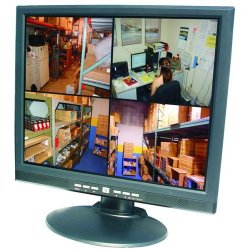 As people discover the benefits of multiple camera wireless security systems, they are becoming ever more popular. Innovative technology has provided additional optional features for these systems making them incredibly versatile in application without making prices skyrocket. In fact, multiple camera wireless security systems can actually save you money by eliminating or keeping security department staffing at a minimum.
As people discover the benefits of multiple camera wireless security systems, they are becoming ever more popular. Innovative technology has provided additional optional features for these systems making them incredibly versatile in application without making prices skyrocket. In fact, multiple camera wireless security systems can actually save you money by eliminating or keeping security department staffing at a minimum.
There are numerous applications for wireless security systems. Industries, business, offices, retail stores, gas stations, schools, churches, and residences are just a few of the possible applications for these systems.
Since the cameras are wireless, it means that there are no transmission cables. Digital video surveillance cameras normally transmit their video signal over some sort of cable, usually a coaxial cable. This cable carries the signal from the camera to the processing unit or Digital Video Recorder (DVR) and each camera must have a cable installed in this manner. For some applications, these cables can be unsightly or difficult to install.
Multiple camera wireless security systems do not require this cabling for the video data. Instead, these cameras have built in transmitters and on-board antennas that send the video data via radio air waves totally eliminating the transmission cables. Most cameras take advantage of the newer 2.4 or 5.8 GHz technology (the same type used with wireless home telephones) available today to send their video signal to a receiver unit which is normally located in close proximity to the DVR.
Using wireless cameras has several benefits. Since the video transmission cable is eliminated, the cameras are much easier and quicker to install. Just mount the camera and plug in the power supply and the cameras are ready to go. In addition, wireless cameras can be mounted in places that cameras with cables may not be able to be placed. Further, wireless cameras are much easier to disguise or hide if necessary for applications that require covert surveillance monitoring.
The camera numbers and types for multiple camera wireless security systems can be “mixed and matched” for each system as well. Each camera can differ in functions and features that are needed for its particular monitoring area and still be combined to operate in tandem with the rest of the system. In addition, systems can have as few as one camera and as many as 16 cameras for each DVR. The maximum number of cameras that can be used is actually limitless. As additional cameras are added, additional receivers, processors, and DVRs can be added to accommodate them.
The digital video cameras of multiple camera wireless security systems transmit their video signal using Line Of Sight or LOS radio wave technology. LOS means that the maximum range stated for a specific camera and receiver pair is based on an unobstructed view between the two. The cameras and receivers will continue to function if an object is blocking the LOS but the maximum range will be reduced. This is generally not a problem as the range for these cameras is normally significant enough to overcome most obstacles. Some wireless cameras boast LOS ranges of up to two miles.
Here are the basics of how a multiple camera wireless security system works. The digital video camera captures video images and transmits them as radio signals to a receiver using a built in transmitter and antenna. Most receivers can handle the simultaneous reception of 4 cameras but there are receivers that can handle even more. Once the receiver has established the cameras’ signals it changes them into electronic signals and passes them on to the processor/DVR unit.
The processor interprets the video signal and creates a digital video file of the signal. Most digital video files are extremely large in size because a digital video is actually a series of individual digital photographs. These large files are difficult to process, handle, and store so most units use a compression utility to reduce the files’ size. The key to the compression utility is that although it makes the file size smaller it still maintains a high degree of quality for the video image.
The smaller, easier to handle digital video file can be viewed in real-time (live) or stored on the DVR for later viewing or archival purposes. Some systems include a DVD recorder so that portions of the video may be copied and viewed elsewhere.
Multiple camera wireless security systems are being used today in a variety of applications for businesses and homes alike. These systems are simple to install and use and are affordably priced.











